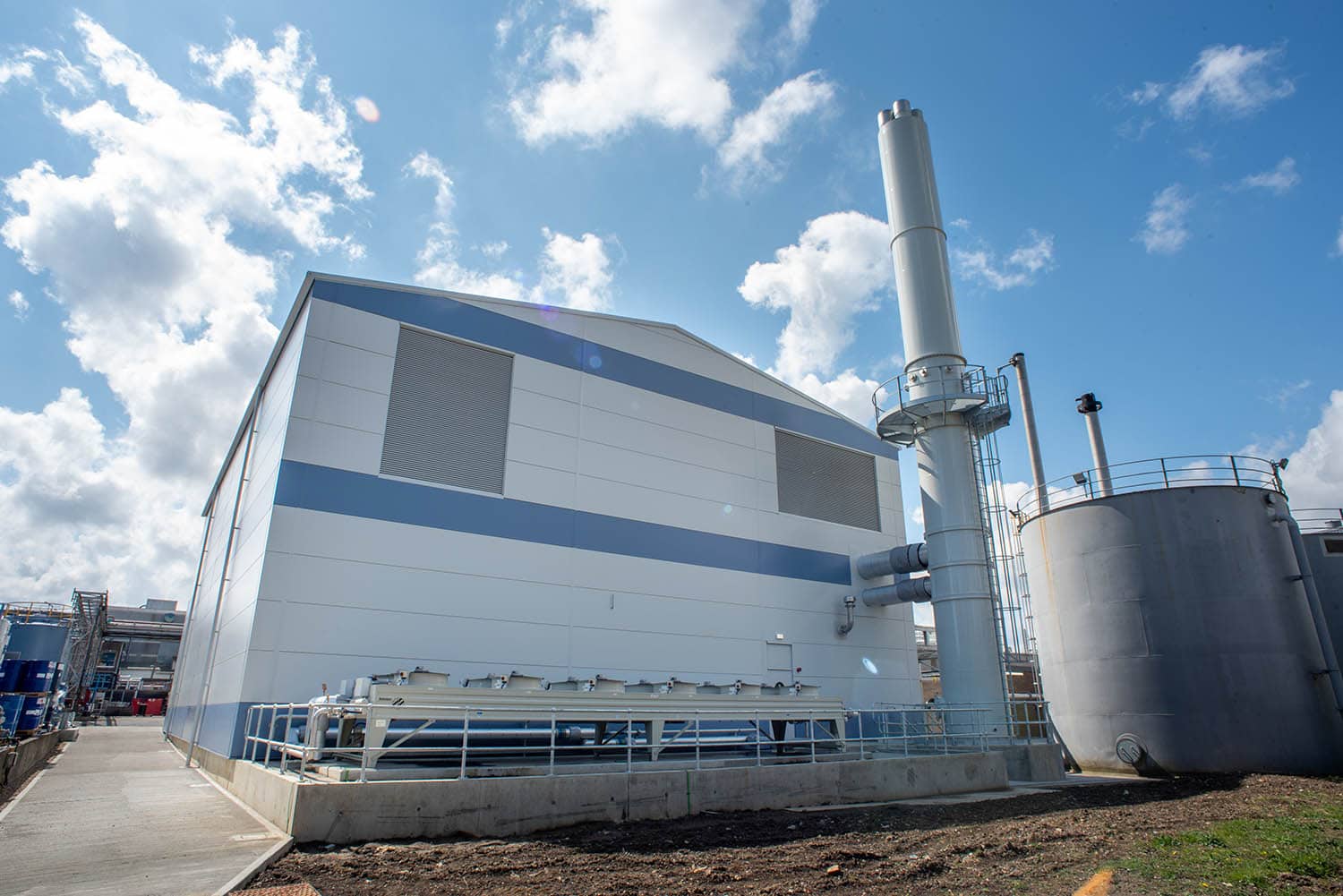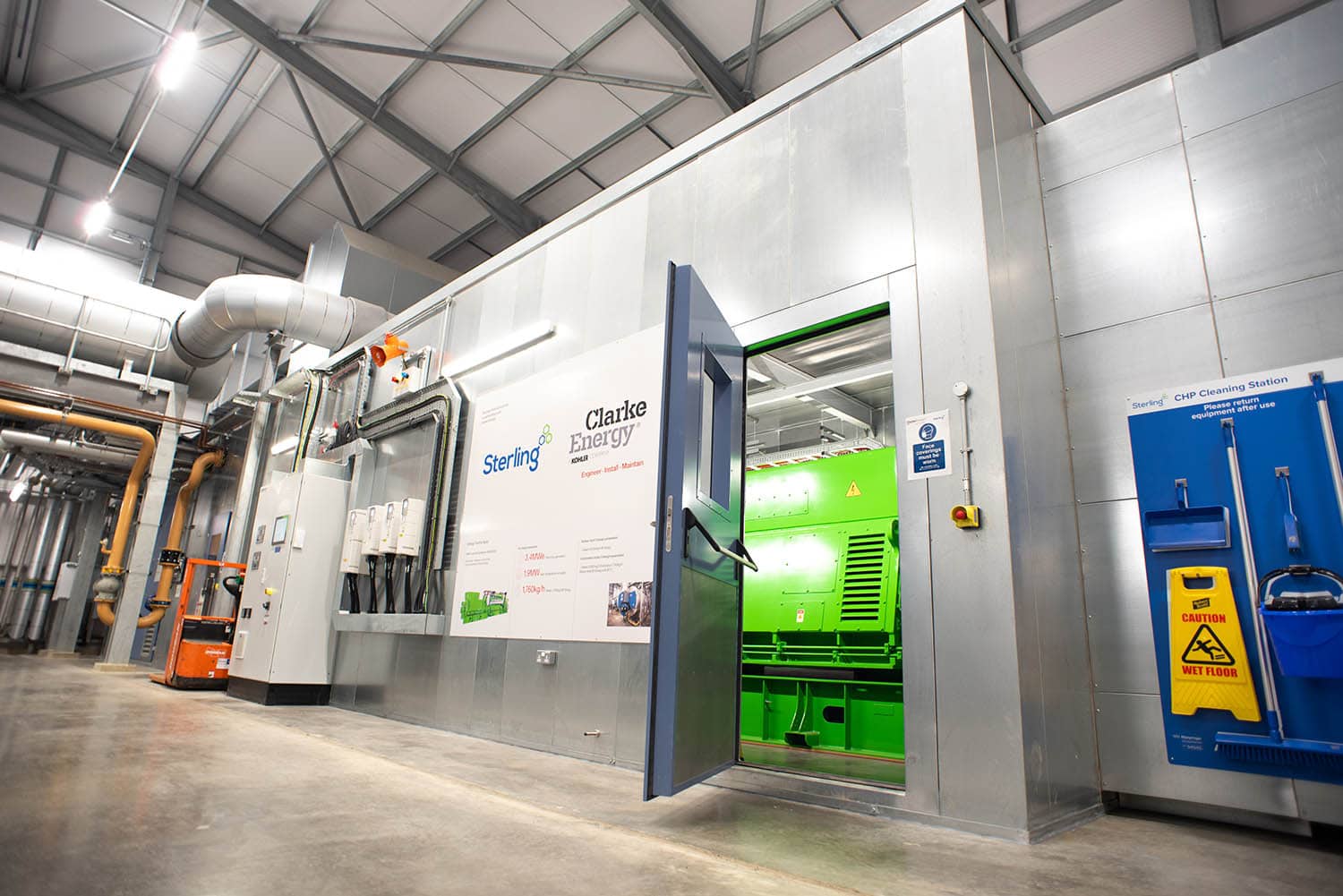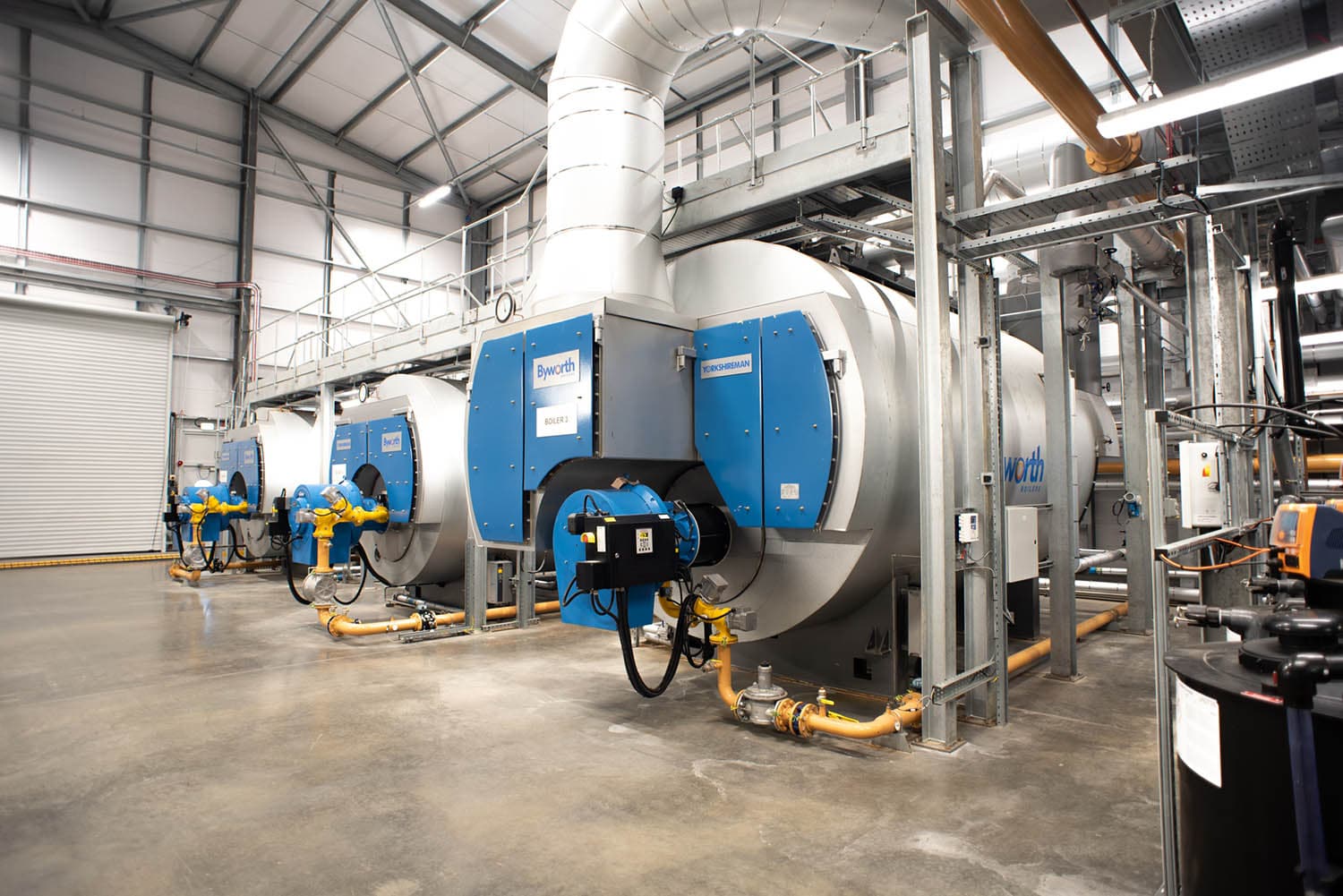By Alan Beech | UK Sales Director | Clarke Energy
The journey to net-zero presents many questions about where combined heat and power (CHP) gas engines fit into the UK’s future energy networks. Achieving net-zero cannot come at the expense of fuel poverty or energy blackouts. It is therefore vital to balance the ‘Energy Trilemma’ of sustainability, affordability and security during the transition. CHP remains a highly versatile and efficient use of primary energy, which can offer benefits and balance all three aspects of the energy trilemma.
CHP can work alongside other renewable energy technologies and energy storage systems as part of a sustainable hybrid energy solution. A recent project example is an award-winning hybrid energy system, delivered by Clarke Energy, to power one of the largest greenhouses in the UK. The 217,000m2 AGR Fenland greenhouse site combines a 33MWth heat pump system with a 9MWe CHP plant, which operates during peak electricity periods with thermal heat storage and CO2 recovery. The installation provides hot water heating to the glasshouse and the CO2 recovered from exhaust gases is transferred to the glasshouse to help accelerate the growth of the produce. Fenland greenhouse will grow 10% of Britain’s cucumbers, requiring 30% less CO2 than a conventionally heated greenhouse.
Clarke Energy will also deliver another innovative carbon capture and conversion system at Severn Trent Water, Derby. Recovered CO2 will be used in eco-friendly products, with a variety of uses, including building materials, paint production and fertilisers. The project could unlock a key technological innovation that could help in meeting our net-zero carbon commitment.
Gas engines can be fuelled by numerous low-carbon or renewable fuels, including pipeline gas, biogas, biomethane and and are even able to operate on up to 100% hydrogen.
CHP plants can be adapted to meet future changes in gas network supply, meaning investments can be made safely for new or existing projects. Running a renewable fuelled gas engine with carbon capture technology could, in fact, make your CHP plant carbon negative.
CHP offers affordability with a typical payback of <3 years and a minimum 15-year lifecycle. It can offer 12 years+ of savings to invest in other carbon saving initiatives or business growth. The availability of a tax allowance / deduction, can generate up to 130% tax offset against the full CHP CAPEX investment. A CHP installation can sometimes operate in conjunction with demand side reserve (DSR) agreements therefore earn revenue for your business, not just save money.
Finally, CHP delivers security of supply as it can be configured as a safety net for your business operations. With minimal investment you can not only dramatically reduce your energy costs and carbon footprint, but also prevent loss of production or business, should a grid event occur.
It is important not to view CHP as an obstacle on the road to net-zero but rather an essential transitional technology, supporting the world’s collective carbon reduction journey.













